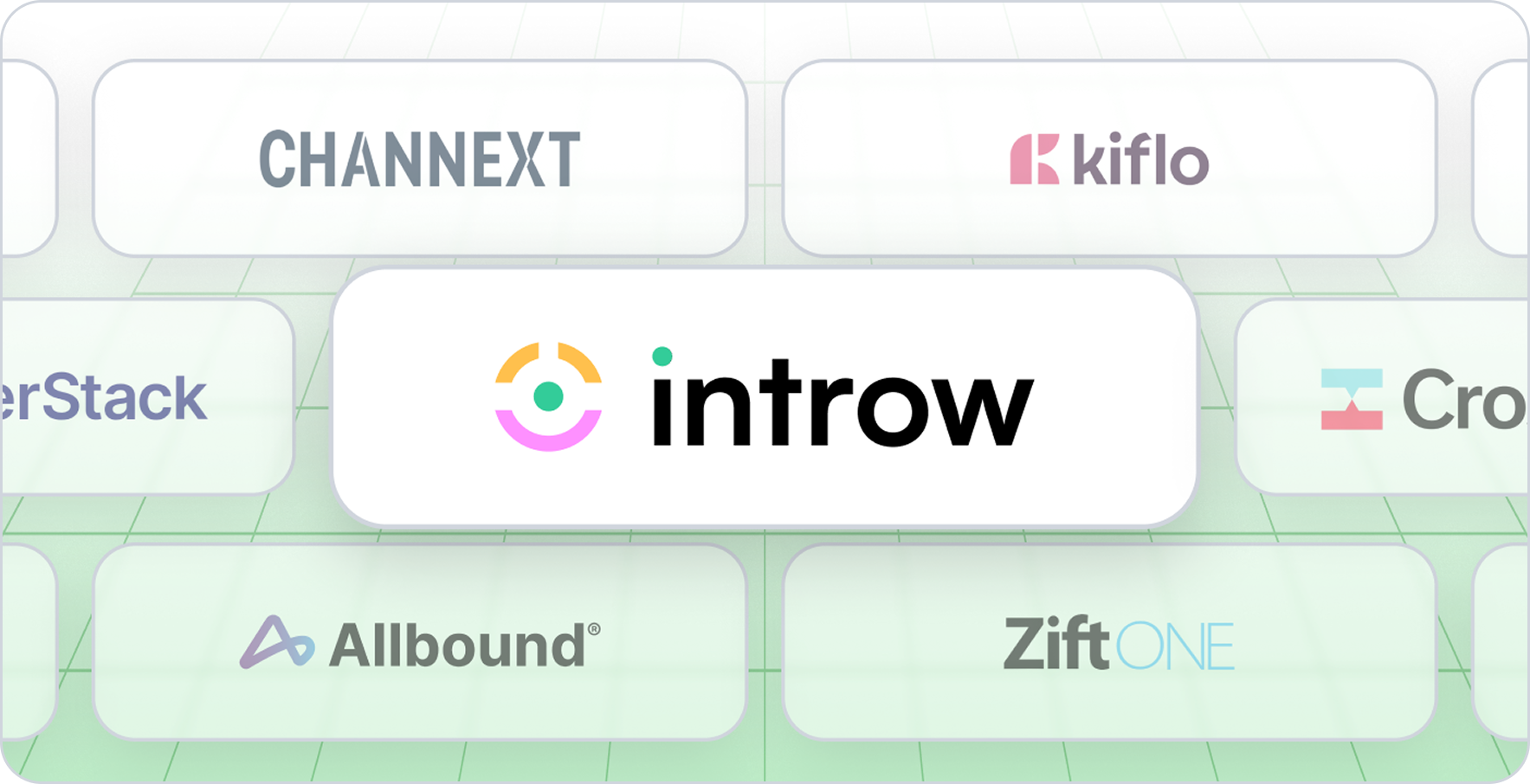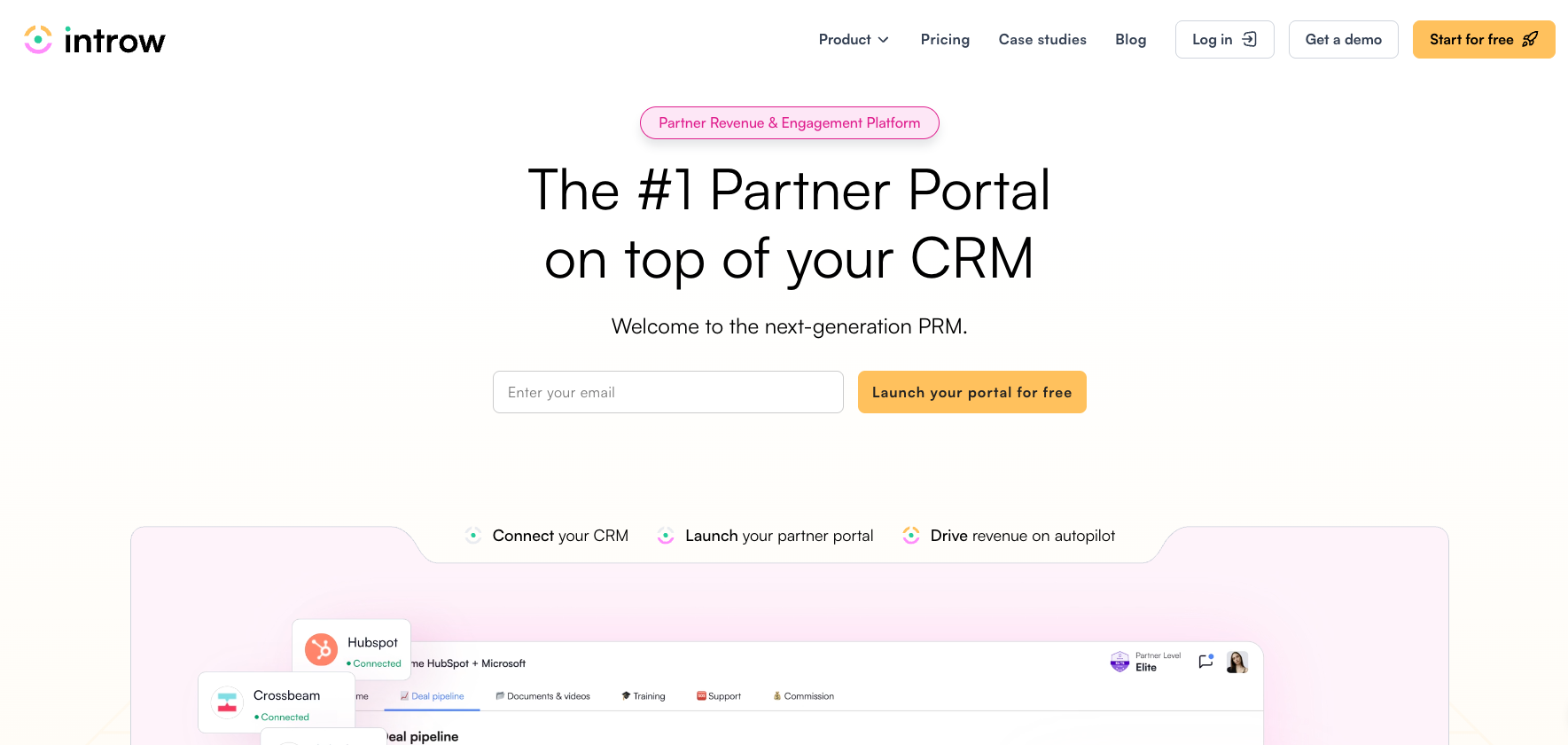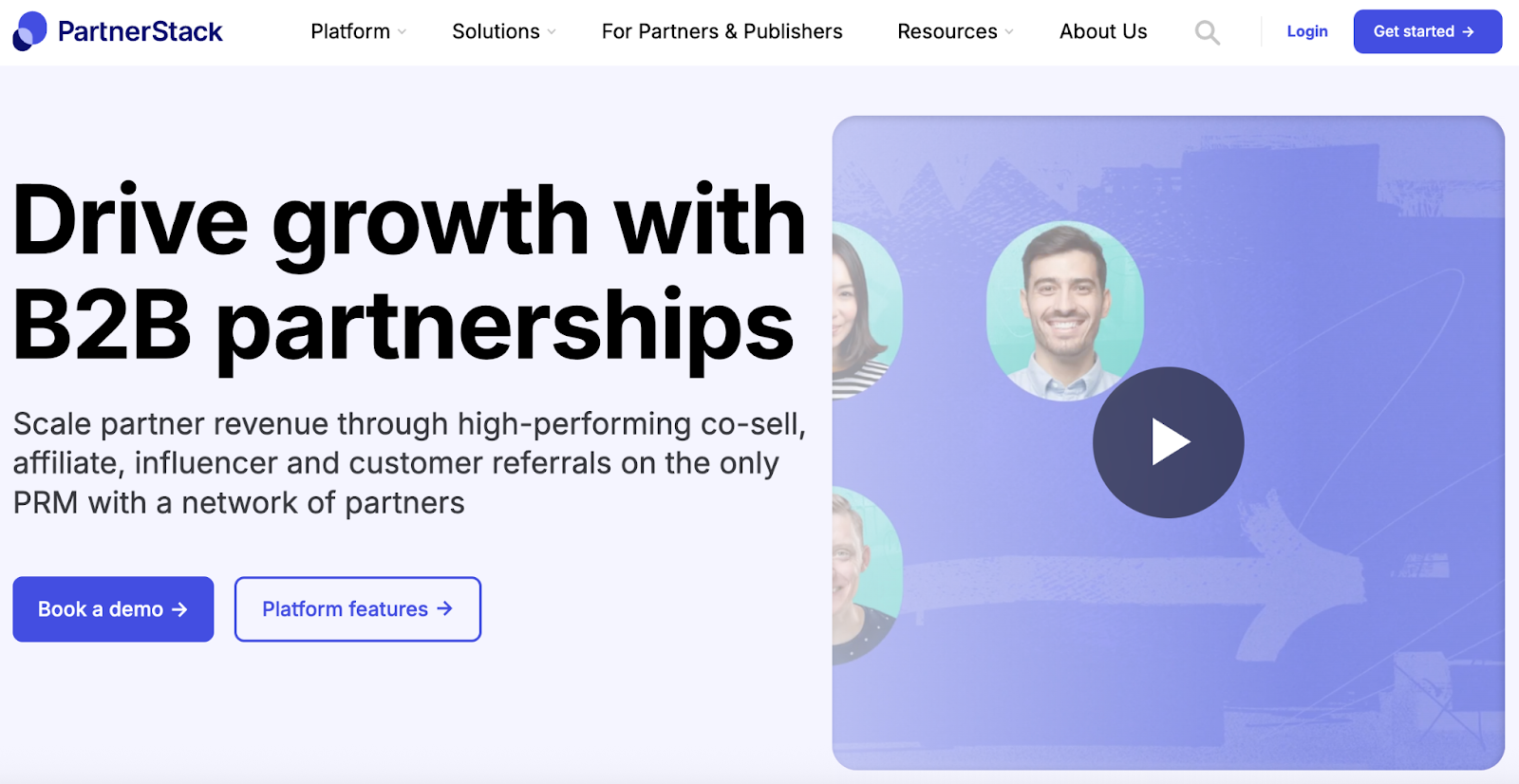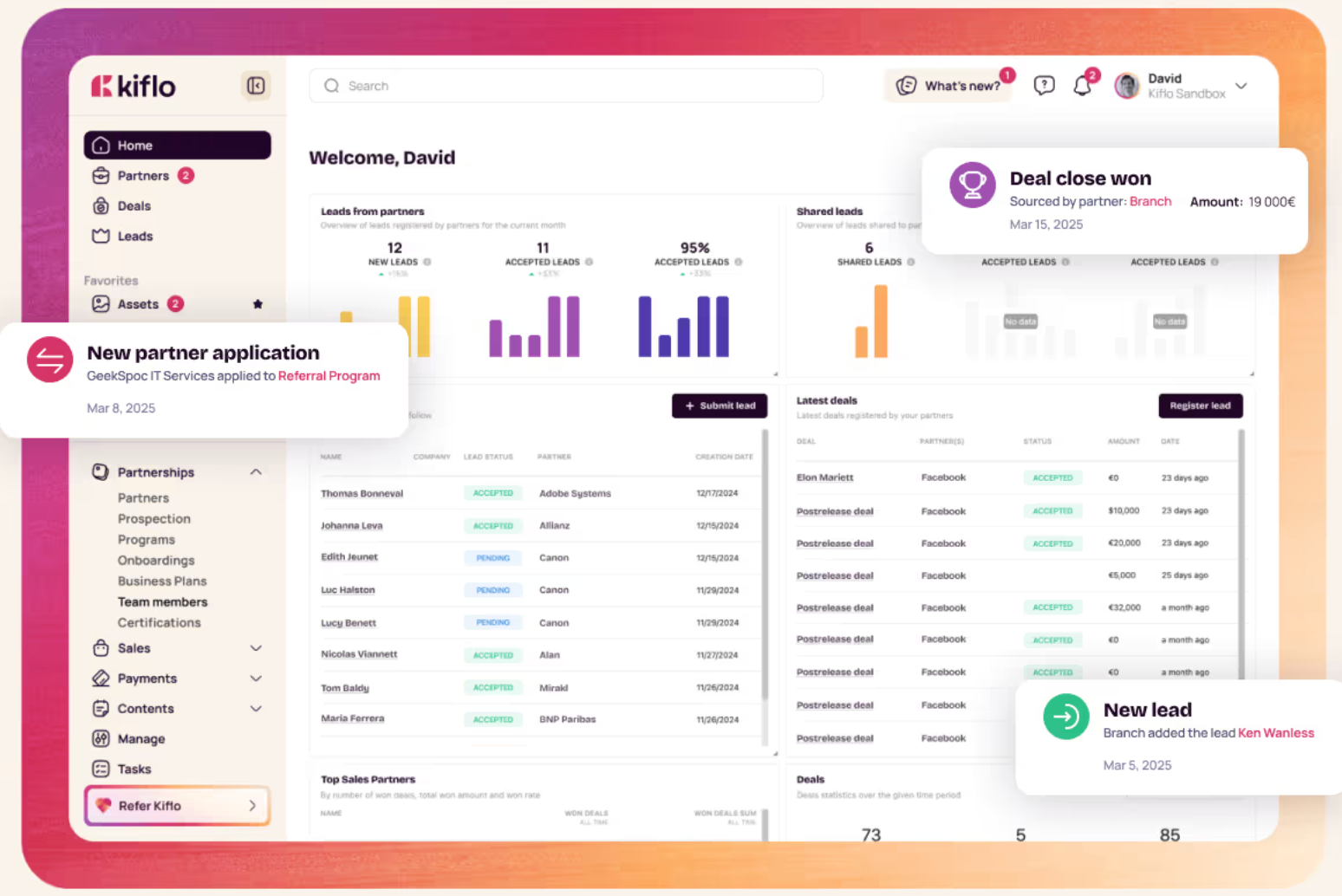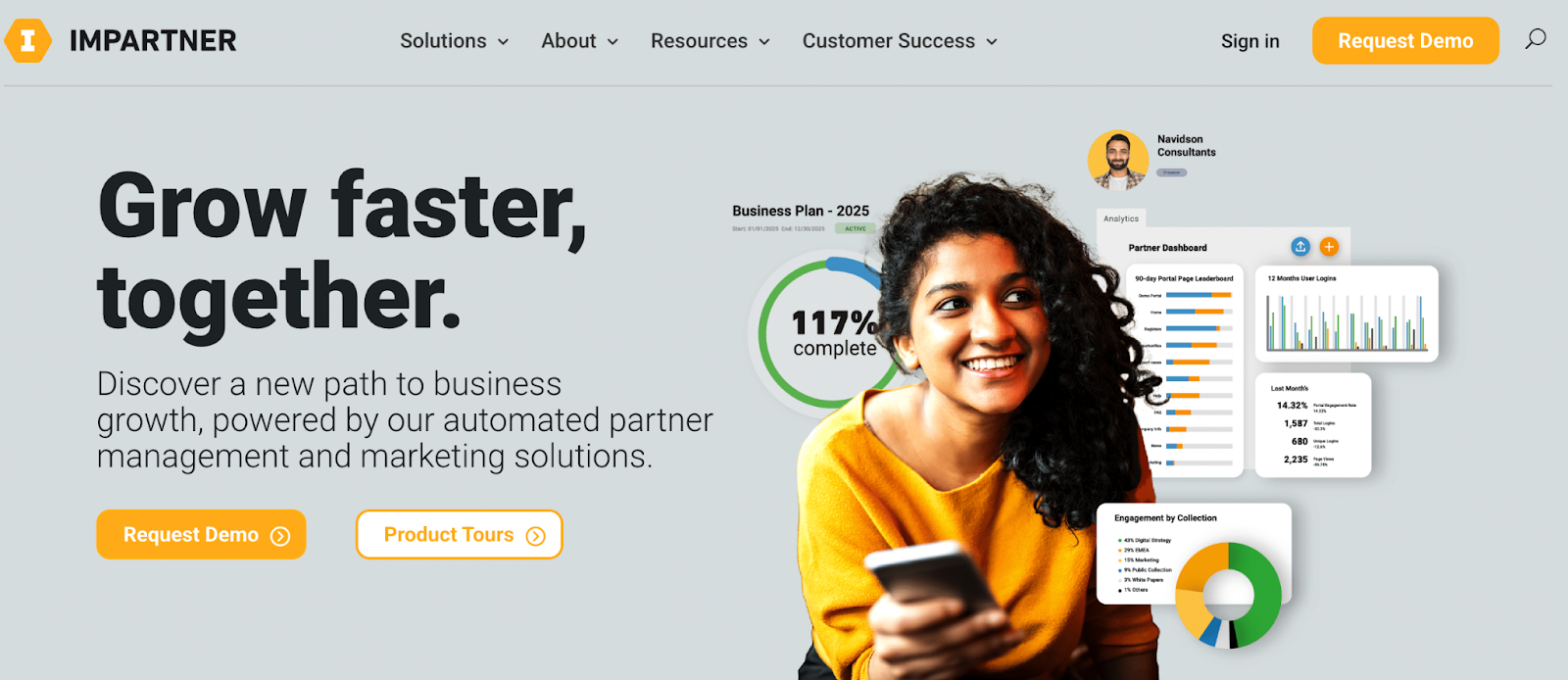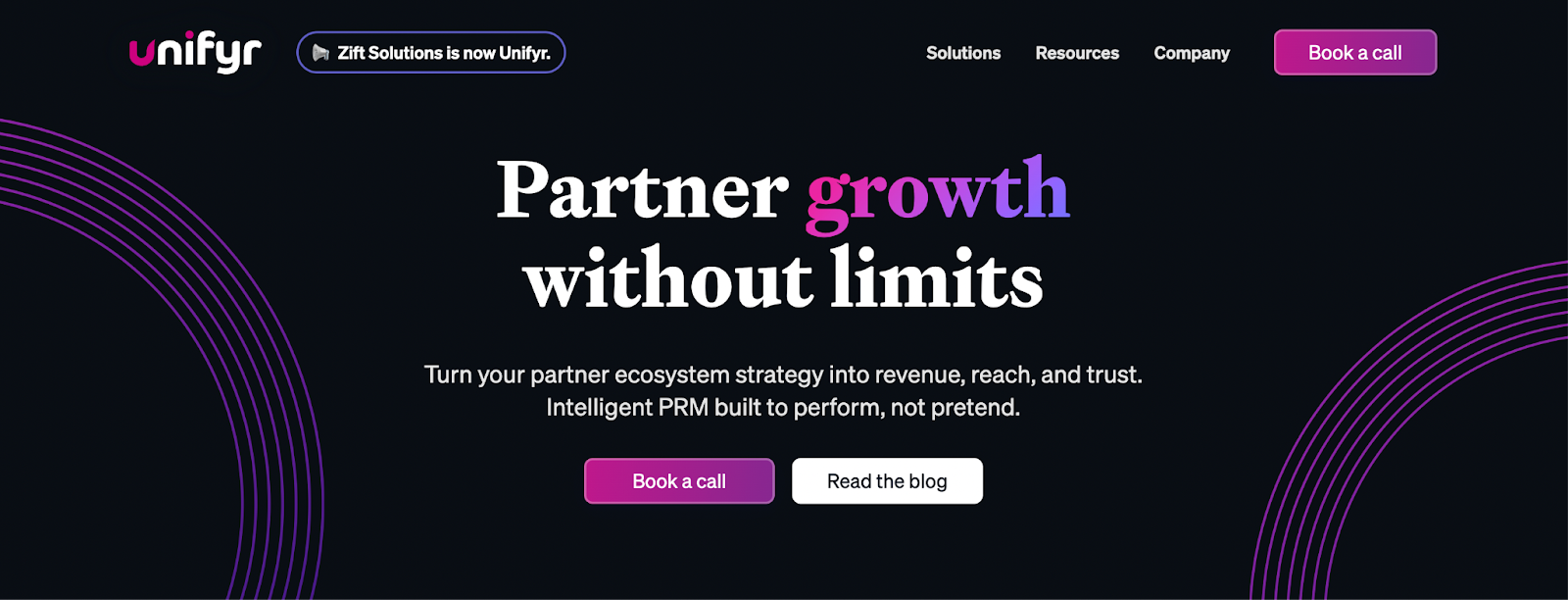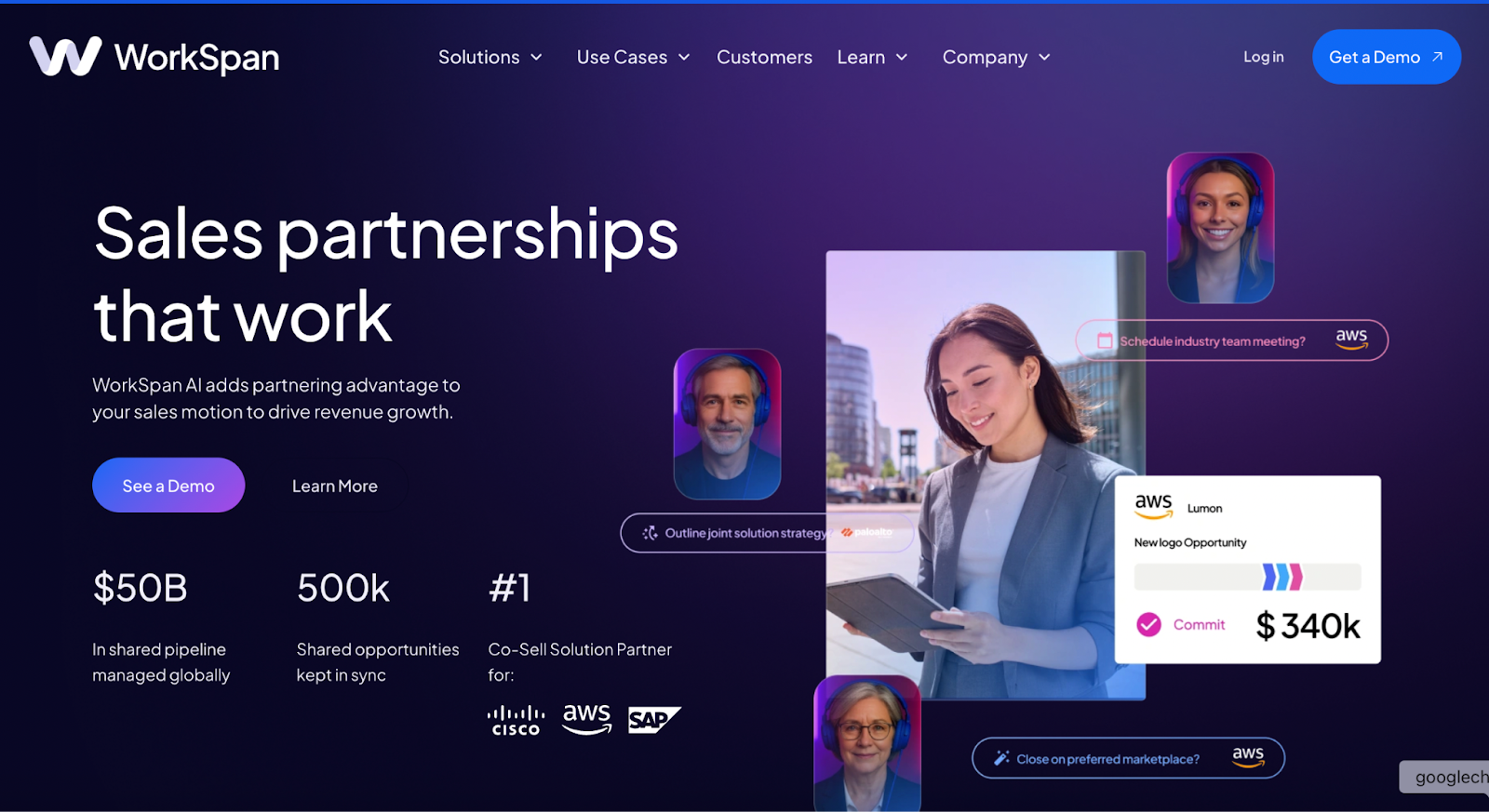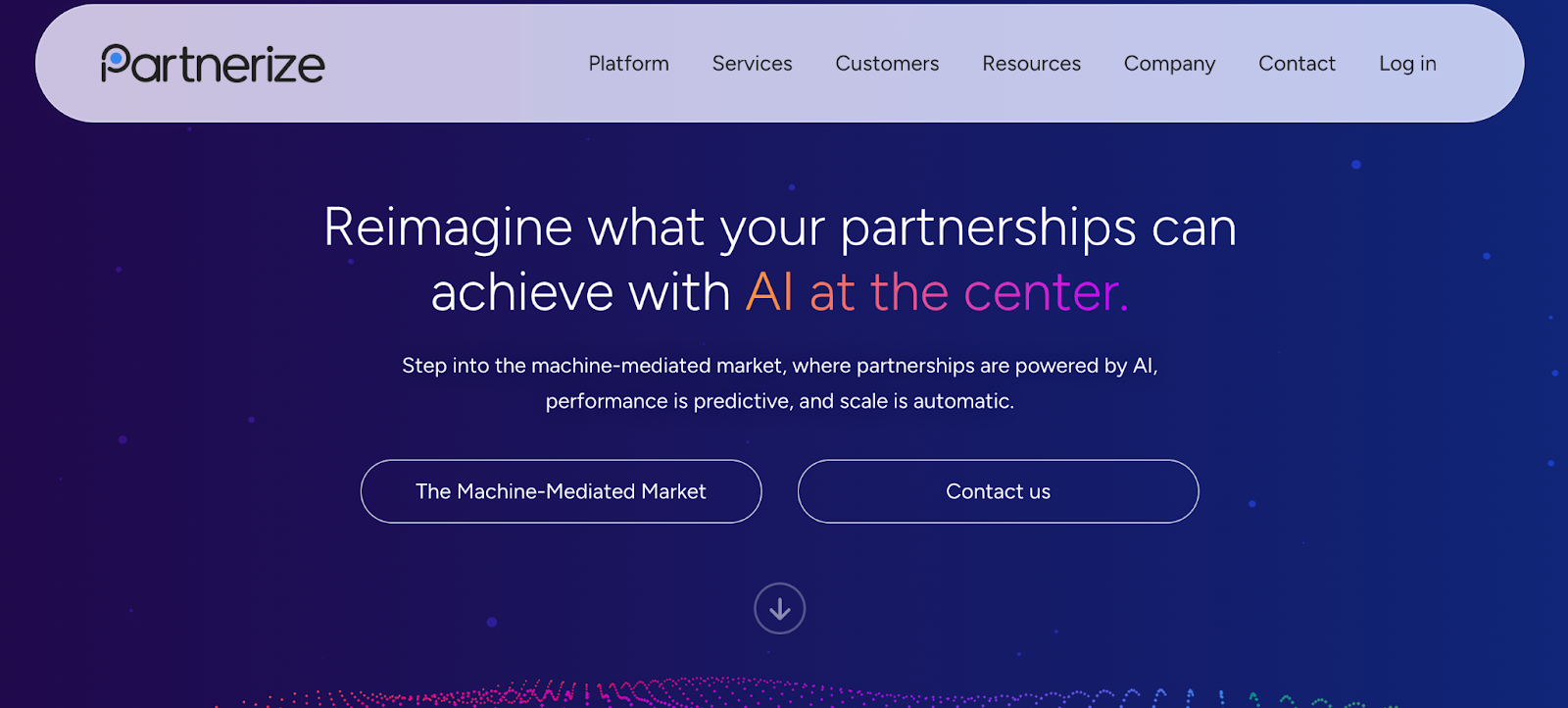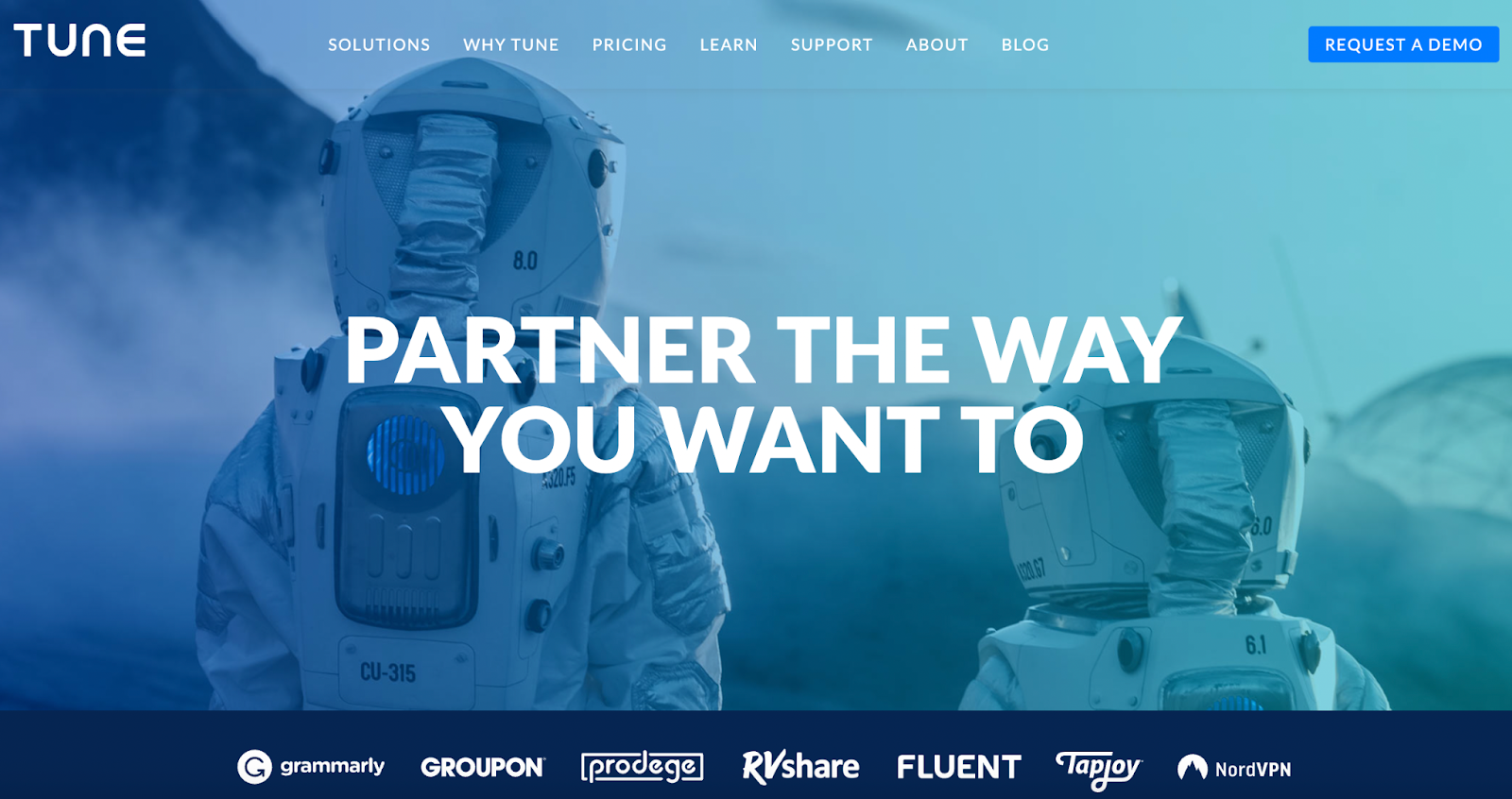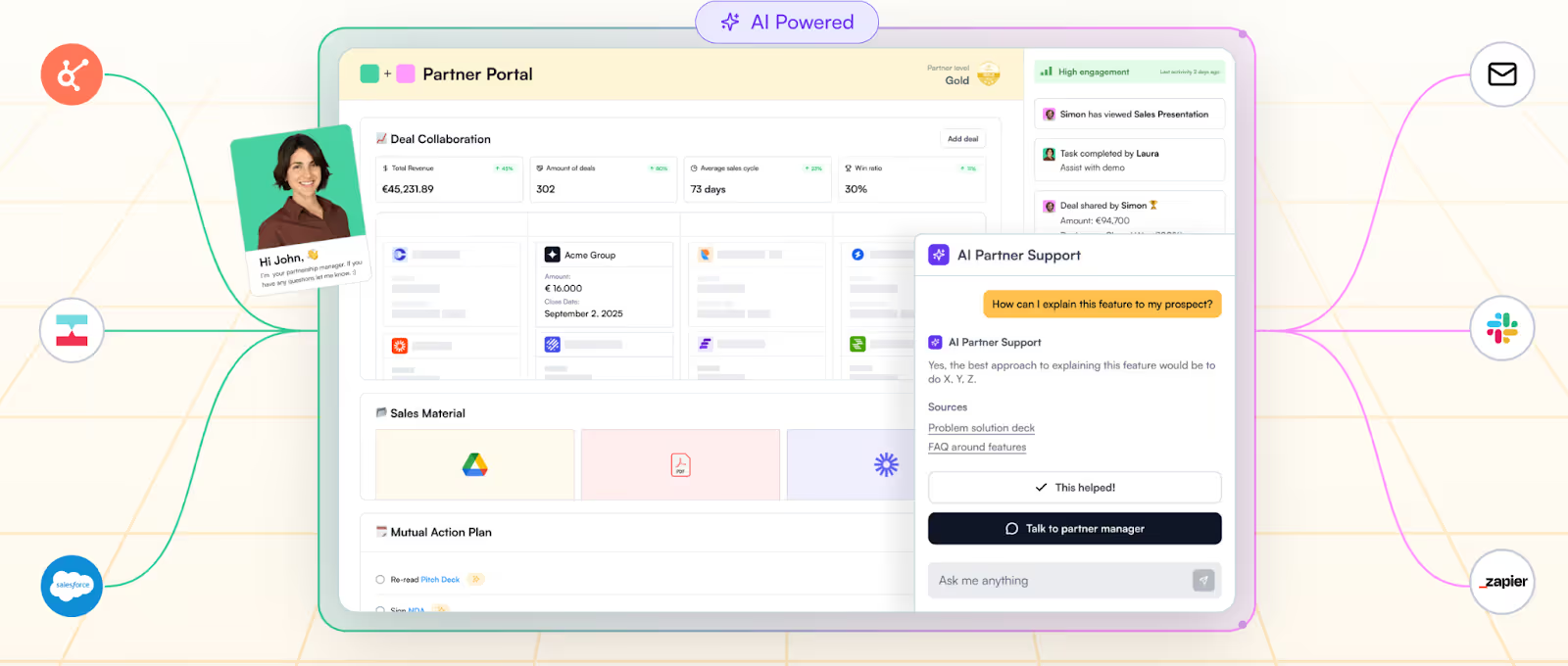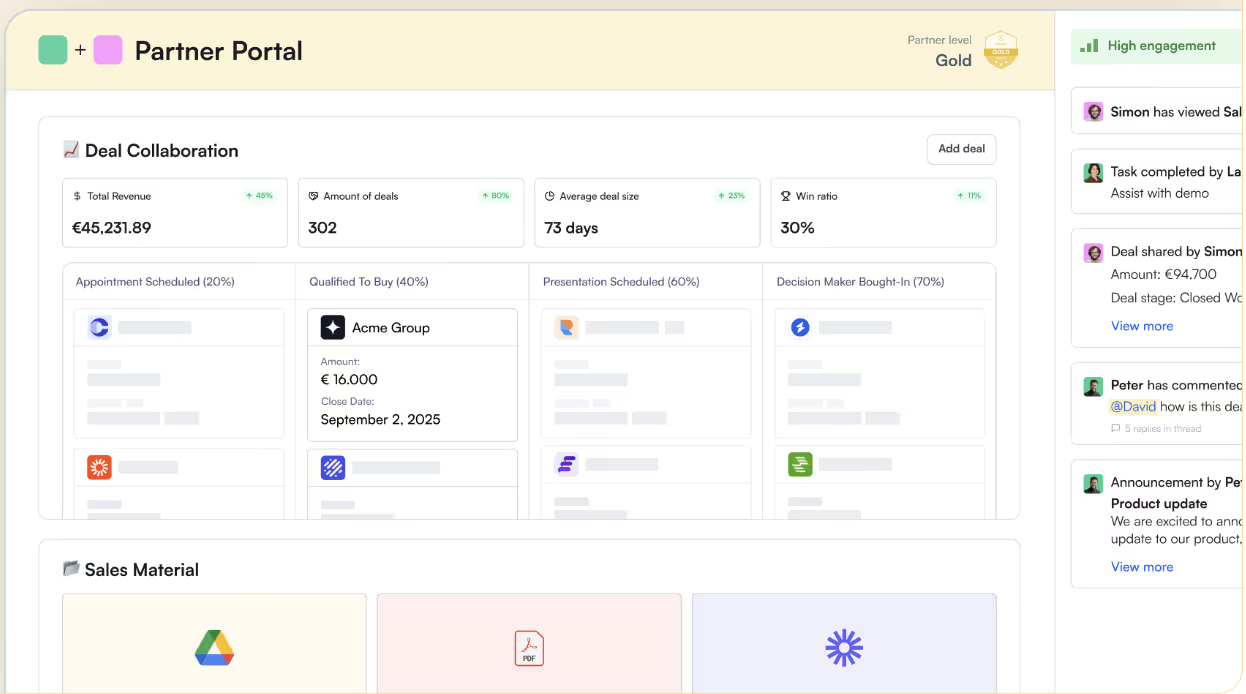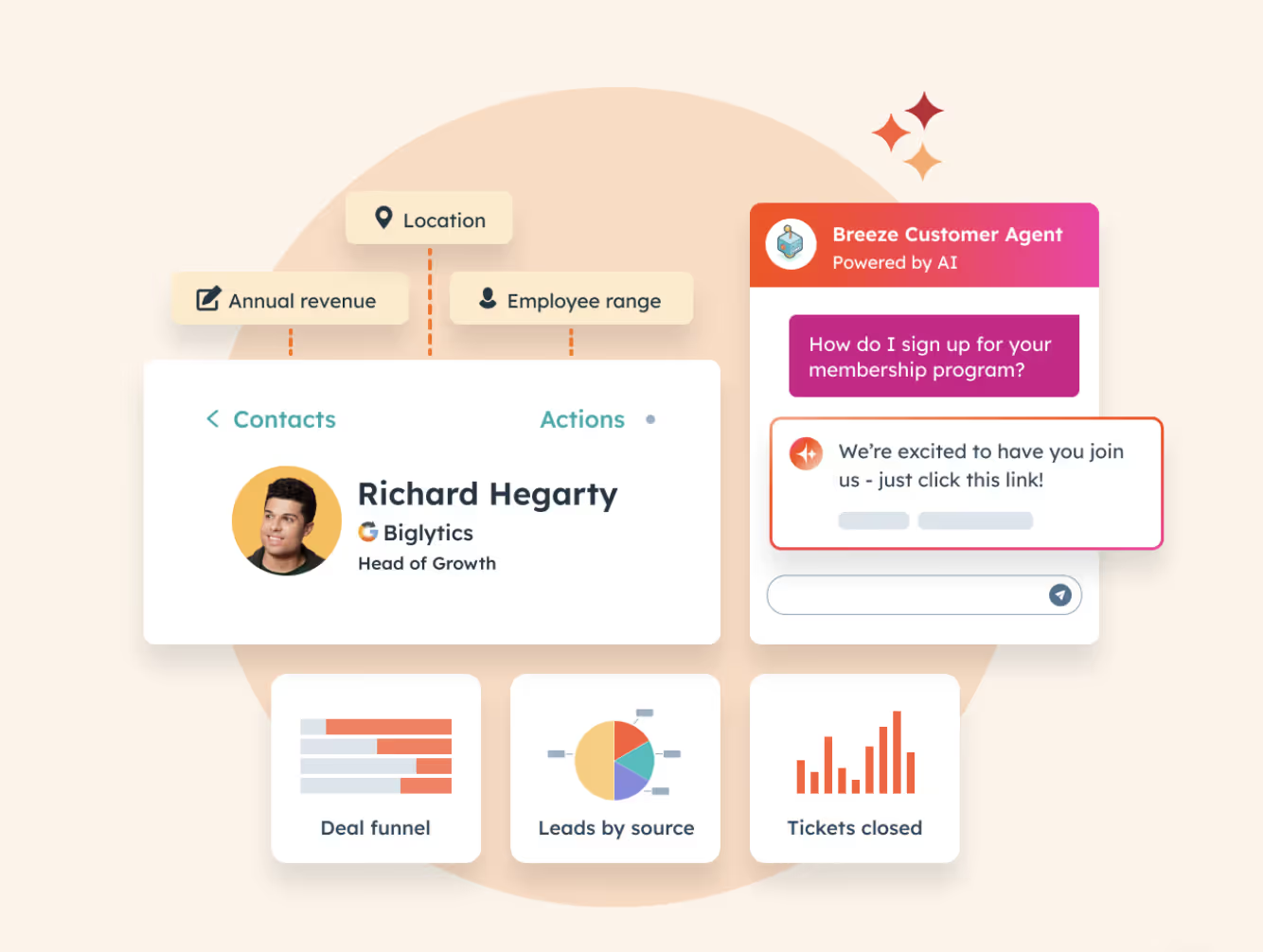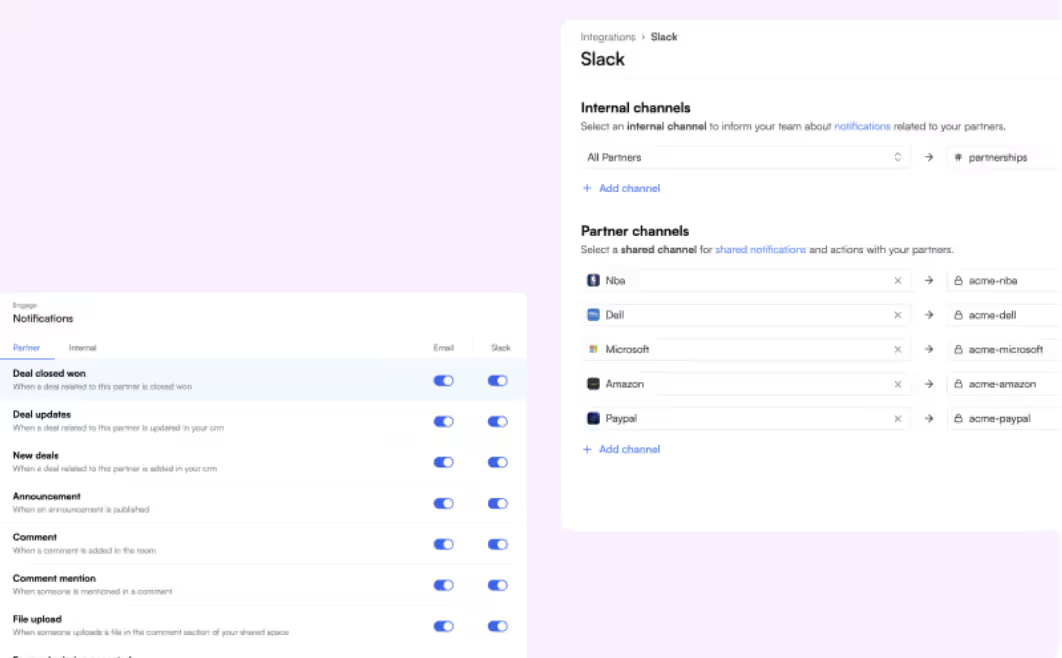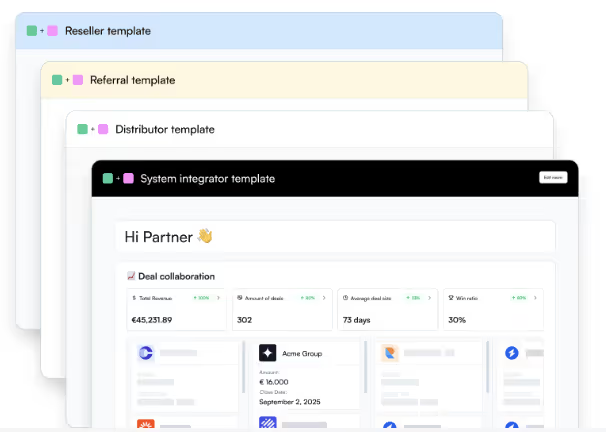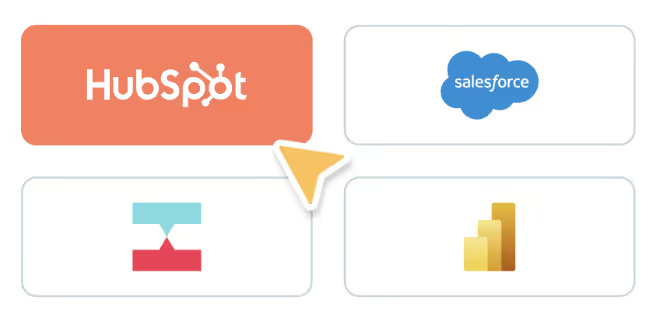Let's start with an obvious question - why teams look beyond Impartner? Impartner is a leading partner relationship management and TCMA provider and remains popular with enterprise programs that need MDF, incentives, and a full management system for partner relationships. Still, many companies assess Impartner competitors to find a better fit for HubSpot coexistence, speed of deployment, lighter admin overhead, or specialized motions like hyperscaler co selling, affiliate partnerships, and marketplace listings.
To help you choose, we compared core PRM software key features — partner portals, partner onboarding and partner training, lead generation and registration, co selling workflows, content management for enablement, real time data sync, and analytics to monitor performance — plus security, global scale, and time-to-value. We also looked at AI capabilities that support partner adoption, guide partners, and automate or orchestrate tasks.
What to look for in an Impartner alternative
- CRM-first operations — keep sellers in Salesforce or HubSpot and give partners a portal that syncs customer and partner data without brittle connectors.
- Deal registration and opportunity management — clear conflict prevention, stage mapping, and SLA alerts so you can track deals, forecast, and run pipeline inspection.
- Partner onboarding and training — automate steps, certify roles, and deliver outcome based enablement that increases partner productivity and adoption.
- TCMA depth when needed — if local demand generation is core, ensure strong through channel marketing automation for brand-compliant campaigns and funding.
- Co-sell and marketplace — if you work with AWS or Microsoft, look for native hyperscaler integrations so alliance teams can collaborate and sell together from your CRM.
- Total cost and services — compare subscription, implementation, and ongoing admin. Lightweight tools can reduce costs and complexity for many businesses.
If you nodded along to most of the checklist above, you’re already thinking like a modern channel team — CRM-first operations, outcome-based enablement, and motion-specific depth where it actually moves the needle. The next step is matching those needs to a platform that your partners will adopt and your RevOps can trust.
How to shortlist in 10 minutes
If that sounds like your roadmap — faster time-to-value, fewer admin cycles, and motions your partners will actually use — the next step is turning options into a shortlist your team can pilot. Use the quick framework below to move from “interesting” to “in production” without stalling in analysis:
- Clarify motion — reseller, referral, co selling, affiliate.
- Set CRM center — Salesforce only, or Salesforce plus HubSpot.
- Pick three to trial — for CRM-first PRM consider Introw; for breadth and incentives consider ZINFI, Unifyr, Channelscaler; for performance-led programs consider impact.com or Everflow; for hyperscaler co-sell consider WorkSpan.
- Score pilots — time to first deal registration, partner adoption and engagement, CRM data quality, visibility for pipeline inspection, and ability to monitor performance.
The 17 best Impartner alternatives in 2026
Before we dive in, a quick orientation: the list mixes classic PRM, co-sell orchestration, and TCMA-led options. Skim the “Best for” line to see fit at a glance, then use the “Why it’s an Impartner alternative” line to understand how each platform approaches partner onboarding, deal registration, and day-to-day collaboration differently.
1) Introw
Best for: CRM-first teams that want partner relationship management embedded in Salesforce or HubSpot — including partner portals, deal registration, and Slack/email collaboration that keeps partners engaged without logins.
Why it’s an Impartner alternative: Introw keeps the portal simple and pushes updates to where people already work. Partners can create and update leads and opportunities; AEs see real time changes in the CRM; RevOps avoids duplicate records. This approach can shorten time-to-value for companies that don’t need a heavy management system.
Notable callouts: Native Salesforce and HubSpot integrations, off-portal Slack and email nudges, and templates that enable partners with the right content at the right time, plus support for custom objects and AI-assisted engagement.
2) Salesforce Partner Cloud (Salesforce PRM)
Best for: Channel partners operating in a single platform with tight ties to Sales Cloud and Service Cloud.
Why it’s an Impartner alternative: Partner Cloud provides partner portals, deal registration, lead distribution, and in app guidance on Experience Cloud with AI CRM alignment. It fits when your organization standardizes on other Salesforce products and wants to automate sales processes in the same data model.
Notable callouts: Strong configuration patterns for deal registration, lead distribution, portal security, and partner enablement practices.
3) ZINFI (Unified Partner Management)
Best for: Programs needing broad PRM coverage — recruitment, onboarding, enablement, incentives — with steady product velocity and AI functionality.
Why it’s an Impartner alternative: ZINFI bundles partner management, partner training, MDF, and automation into one solution so channel managers can manage lifecycles in fewer tools. Often shortlisted by Impartner customers exploring options.
Notable callouts: Emphasis on AI and autonomous workflows to improve engagement and performance while reducing admin.
4) Unifyr (formerly Zift Solutions)
Best for: Teams that want PRM plus through channel marketing automation and training under one roof.
Why it’s an Impartner alternative: The ZiftONE stack rebranded as Unifyr, positioning an all-in-one, AI-enabled platform for partner ecosystem growth. It shines when MDF, enablement, and content syndication sit alongside PRM.
Notable callouts: Automated partner onboarding, certification, and flexible experiences for VARs, MSPs, referral partners, and distributors.
5) Channelscaler (Allbound + Channel Mechanics)
Best for: Teams that need modern PRM UX plus enterprise-grade rebates, pricing, and incentive automation.
Why it’s an Impartner alternative: After the Allbound and Channel Mechanics merger, Channelscaler unified PRM with powerful commercial automation — an attractive combo for programs that need both.
Notable callouts: Focus on scalability, integration, and intelligence that improves partner experience and outcomes.
6) Channeltivity
Best for: Mid-market teams prioritizing fast deployment and point-and-click CRM integration over custom builds.
Why it’s an Impartner alternative: Channeltivity’s partner portal integrates with HubSpot and Salesforce to sync partners, contacts, deal registration, and referrals — giving channel managers immediate visibility in CRM.
Notable callouts: Two-way sync and simple field mapping — helpful when ramping new partners quickly.
7) Magentrix
Best for: Salesforce-centric companies that want a configurable portal with strong CRM mirroring and fewer sync headaches.
Why it’s an Impartner alternative: Magentrix positions itself as a Salesforce PRM alternative to Experience Cloud, focusing on partner portals, collaboration, and opportunity management.
Notable callouts: Integration resources and guides emphasize running partner operations without constant connector firefights.
8) PartnerStack
Best for: B2B programs combining affiliate, referral, and reseller motions with marketplace reach and automated payouts.
Why it’s an Impartner alternative: PartnerStack marries PRM-like workflows with a large marketplace and payouts engine — useful when you need to drive traffic, recruit the right partners, and pay at scale.
Notable callouts: Strong market reach and partner liquidity that can accelerate lead generation and revenue.
9) Kiflo
Best for: SMBs and scale-ups formalizing a first partner program with clean HubSpot connectivity.
Why it’s an Impartner alternative: Kiflo is a lighter-weight PRM software with native HubSpot sync for leads, deals, and contacts — enough to manage partners, share marketing resources, and track outcomes without a heavy lift.
Notable callouts: Two-way sync and field mapping that support quick adoption.
10) WorkSpan
Best for: ISVs and companies that co-sell with AWS, Microsoft, or Google — and want those motions inside Salesforce.
Why it’s an Impartner alternative: WorkSpan digitizes co-sell and marketplace workflows with managed packages for Sales Cloud, integrating with hyperscaler partner systems to share referrals and real time insights.
Notable callouts: Bi-directional sync, KPI dashboards, and private offer support that keep alliance teams aligned.
11) Mindmatrix (Bridge)
Best for: Programs that need deep partner enablement and partner marketing with integrated PRM and TCMA.
Why it’s an Impartner alternative: Mindmatrix positions an AI-powered PRM that spans engagement, partner onboarding, training, and performance — combining portal experience with campaign tools.
Notable callouts: Bi-directional sync, KPI tracking, and training capabilities to enable partners effectively.
12) StructuredWeb
Best for: Enterprise brands where through channel marketing automation is central to the partner program.
Why it’s an Impartner alternative: StructuredWeb focuses on channel marketing automation, personalization, and last-mile execution to help partners sell more.
Notable callouts: Enterprise-grade TCMA that complements PRM for brand control and local activation.
13) SproutLoud
Best for: Distributed marketing and brand-to-local execution where partners need turnkey, compliant campaigns.
Why it’s an Impartner alternative: SproutLoud simplifies local marketing with catalogs, last-mile fulfillment, and services that help partners launch campaigns and drive traffic.
Notable callouts: Education content and analytics to monitor performance and optimize spend.
14) Everflow
Best for: Performance-driven partnerships where you need granular tracking, fraud controls, and analytics across affiliates, influencers, and B2B referrals.
Why it’s an Impartner alternative: Everflow consolidates partner and affiliate management in one platform with strong reporting — useful for companies that treat affiliates as a core channel.
Notable callouts: First-party tracking and multi-channel attribution to track leads, engagement, and deals.
15) TUNE
Best for: Teams that want a highly configurable partner and affiliate software with branded experiences.
Why it’s an Impartner alternative: TUNE emphasizes customization and flexible commissioning — good when your program model doesn’t fit template tools and you want more control over partner activities and payouts.
Notable callouts: Usability and data visualization for managing partnerships end-to-end.
16) Partnerize
Best for: Global brands scaling affiliate and partnership channels with AI-assisted optimization.
Why it’s an Impartner alternative: Partnerize invests in AI and data intelligence — helping brands identify the right partners, optimize spend, and mitigate fraud.
Notable callouts: An AI-powered roadmap and enterprise focus — relevant if you run a mature performance program.
17) PartnerPortal.io
Best for: HubSpot-centric teams that want a 15-minute partner portal for registration, lead generation, deal registration, and a simple resource center.
Why it’s an Impartner alternative: Instead of a big PRM rollout, PartnerPortal.io is plug-and-play — submit leads, create or link deals, and leverage account mapping for attribution.
Notable callouts: Fast setup and two-way sync for channel partners that need to get moving now.
With PartnerPortal.io, we wrap up the spectrum from enterprise suites to plug-and-play portals — spanning PRM depth, TCMA muscle, co-sell orchestration, and affiliate performance. If one of these fits your motion, great. If not, it’s worth checking whether your needs actually match what Impartner already does best.
When to stick with Impartner
Stay with Impartner if you’re deeply invested in MDF, TCMA, and global governance — especially if your partner program needs robust incentives and brand control plus advanced services and support. Impartner’s breadth in incentives and marketing operations remains a differentiator for many Impartner customers.
Switch when your priorities are CRM-first workflows, lightweight admin, or specialized motions — such as hyperscaler co selling (WorkSpan), HubSpot-native operations (Introw, PartnerPortal.io), or affiliate-heavy growth (impact.com, Everflow, TUNE, Partnerize).
Why Introw is your choice in 2026
If you want partner operations that feel native to your CRM, Introw keeps partners, AEs, and RevOps working in the same place — no extra portals or swivel-chairing. You can create and manage leads and opportunities, use custom objects where it makes sense, and rely on real time data for tracking deals, attribution, and forecasts. Partners can collaborate via email or Slack, and updates land back in the CRM automatically. Enablement stays practical too — lightweight content, simple guidance, and clear checkpoints so partners know what to do next and you can monitor progress without chasing spreadsheets.
The payoff is straightforward: cleaner customer data, faster handoffs, and a steadier pipeline without the overhead of a custom Experience Cloud build. If that’s the kind of partner experience you’re after, book a short demo to see Introw in your stack and talk through your motions.
Which Impartner alternative fits HubSpot-centric teams best?
Introw runs CRM-first in HubSpot — partners submit leads, deals sync both ways, and channel managers see real-time pipeline without adding another heavy portal.
How does Introw compare to Impartner on partner adoption?
Introw lets partners work by email or Slack — no forced logins — and writes updates back to the CRM in real time. That reduces friction and raises engagement versus classic portal-only flows.
If we need through channel marketing automation, do we have to pick Impartner?
Not necessarily. Many teams pair Introw for onboarding, deal registration, and attribution with a TCMA tool for brand and campaigns — keeping data connected through the CRM.
Can Introw cover co-sell and deal registration like Impartner?
Yes — partners register and update deals, AEs and RevOps get attribution and forecasts inside the CRM, and co-selling updates flow by email or Slack for faster collaboration.
What’s the time-to-value difference vs. an enterprise PRM like Impartner?
Introw typically goes live in days with forms, deal reg, and notifications — then you layer approvals and custom objects over time. Lighter admin usually means lower total cost and faster outcomes.


.svg)



















